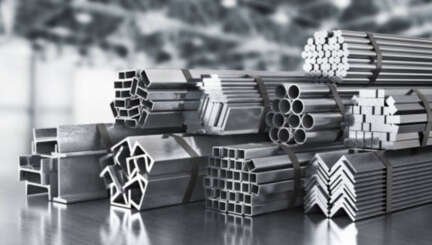Have you ever wondered how a home renovation could benefit both you and the planet? Sustainable design offers a way to make your living space more energy-efficient, eco-friendly, and cost-effective in the long run.
You can create a home that feels good to live in and good to the environment. This is by choosing sustainable materials, energy-saving solutions, and mindful construction methods.
Ready to explore how sustainable design can transform your renovation project? Let’s dive in!
Energy Efficiency Gains
Sustainable design focuses on improving energy efficiency throughout your home. Installing better insulation helps keep temperatures stable. This reduces the need for heating and cooling.
Energy-efficient windows can minimize heat loss in the winter. It can also prevent heat from entering in the summer. Adding solar panels can harness free energy from the sun. This lowers your reliance on grid power.
LED lighting uses less energy and lasts longer than traditional bulbs. Using energy-efficient appliances also cuts down on electricity usage. Programmable thermostats allow you to control temperatures. This saves energy when you’re not home.
Lower Utility Bills
Sustainable design can lower your utility bills. Energy-efficient appliances consume less power, which means lower electricity costs. Upgrading insulation helps maintain comfortable temperatures, reducing the need for heating and cooling.
Solar panels can generate electricity, reducing your reliance on costly grid power. Low-flow fixtures, like showerheads and faucets, reduce water usage, cutting water bills.
By improving airflow and sealing gaps, your home becomes more energy-efficient. This lowers heating and cooling expenses. Using smart thermostats allows you to control energy usage more precisely. It also saves on energy costs.
Eco-Friendly Materials
Eco-friendly materials are a key part of sustainable design. They help reduce the environmental impact of your renovation. For example, bamboo is a renewable material that works well for flooring. It also works well with cabinetry.
Recycled materials, such as glass and metal, can be used in various areas of the home. This includes countertops and tiles. When it comes to kitchen remodeling, using low-VOC paints and finishes improves air quality. This is by reducing harmful chemicals.
Natural stone, like granite or marble, can be sourced sustainably. This is for countertops and backsplashes. Cork is another eco-friendly option for flooring, offering durability and comfort. Many eco-friendly materials are also more durable. This means they last longer and reduce the need for replacements.
Improved Indoor Air Quality
Sustainable design can improve the air quality inside your home. Using low-VOC paints, finishes, and sealants reduces harmful chemicals in the air. Eco-friendly materials do not emit toxins that can affect your health. This includes natural wood and stone.
Proper ventilation helps remove indoor pollutants, ensuring clean air flow. Air-purifying plants can be added to enhance air quality naturally. Sustainable flooring options don’t release harmful substances like some synthetic materials. Some examples are cork or bamboo.
A well-insulated home prevents moisture buildup, reducing mold growth and improving air quality. Choosing natural fabrics for upholstery and curtains avoids the chemicals found in synthetic materials.
Long-Term Cost Savings
Sustainable design can lead to significant long-term savings for homeowners. Energy-efficient upgrades lower monthly utility bills, saving money year after year. Durable materials reduce the need for frequent repairs or replacements. This means less spending over time.
Installing solar panels can lower your electricity costs. It can even earn you energy credits. Eco-friendly appliances often have a longer lifespan and consume less energy. This reduces replacement and maintenance costs.
Improved insulation keeps your home at a comfortable temperature. This cuts heating and cooling expenses. Water-saving fixtures lower your water bill, especially in areas with high water costs. Choosing sustainable options may also increase your home’s resale value. This provides a return on investment.
Reduced Environmental Impact
Sustainable design helps reduce the environmental impact of your home. Using eco-friendly materials lowers the demand for resources and reduces waste. Energy-efficient systems cut down on greenhouse gas emissions. This includes solar panels and LED lighting.
By choosing renewable energy sources, you reduce your carbon footprint. It can also help combat climate change. Installing water-saving fixtures conserves water, which is an essential resource.
Sustainable construction practices use fewer harmful chemicals, keeping the environment cleaner. Recycled materials help reduce the amount of waste sent to landfills.
Enhanced Property Value
Sustainable design can increase the value of your home. Many buyers today are looking for eco-friendly features in a home. Energy-efficient systems and solar panels are attractive because they lower future utility costs.
Homes with sustainable materials are often seen as more durable and appealing. Green certifications or energy ratings can make your property stand out in the market.
Sustainable renovations are also associated with lower maintenance costs. This can be a strong selling point. A home with good insulation and energy-saving features will be more comfortable and cost-effective to live in.
Healthier Living Spaces
Sustainable design can create healthier living spaces. Using non-toxic paints and finishes reduces harmful chemicals in the air. Eco-friendly materials, like natural wood and stone, do not emit toxins. This improves indoor air quality.
Better ventilation systems help circulate fresh air and reduce indoor pollutants. Installing water filtration systems ensures clean and safe drinking water. Sustainable flooring options are less likely to harbor:
- dust
- allergens
- mold
A well-insulated home helps maintain a comfortable temperature. This reduces humidity levels that can cause respiratory issues. The use of natural lighting reduces the need for artificial lighting. This can improve mood and well-being.
Increased Durability and Longevity
High-quality, eco-friendly materials are more durable and can withstand wear and tear. For example, bamboo and reclaimed wood are known for their strength and longevity. Installing energy-efficient windows and doors helps prevent damage from extreme weather conditions.
Sustainable materials are also more resistant to pests, mold, and rot. This can save on repairs. With proper insulation, your home will maintain its comfort for years. This reduces the need for constant adjustments.
Durable appliances and fixtures are built to last longer, saving you money over time. Choosing materials with a longer lifespan reduces the need for replacements. It also cuts down on waste.
All About Sustainable Design in Home Renovations
Sustainable design plays a crucial role in home renovations. This is by making homes more energy-efficient and eco-friendly. It offers long-term savings, improves health, and increases property value.
By choosing sustainable materials and practices, homeowners create a more comfortable living space. Ultimately, sustainable design helps build a better future for both people and the planet.
Looking for more tips and ideas? We’ve got you covered. Check out some of our other posts now.







